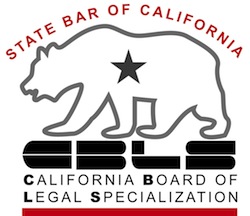Servicers must now send monthly mortgage statements to borrowers in bankruptcy under a new CFPB rule effective April, 2018.
Thus ends, we hope, years of uncertainty and indifference, rooted in the automatic stay and a homeowner’s ongoing obligation on their mortgage after bankruptcy.
The earlier version of the rule, adopted in 2014, allowed servicers to send no statements to consumers who had discharged their personal liability in bankruptcy or who had a pending bankruptcy case.
Now the rule creates a duty to render a monthly statement unless
- the consumer requests the servicer stop sending statements
- the consumer’s Chapter 13 plan provides for surrender, avoidance of the lien, or doesn’t provide for ongoing payments
- a court order avoids the mortgage lien
- a Chapter 7 statement of intentions indicates surrender AND no payment has been made since bankruptcy was filed
Even if an exemption to the duty applies, the consumer can opt in to receiving monthly statements by making a written request. The request can be made by any borrower on the loan or by their agent, such as their bankruptcy attorney.
And just like RESPA Requests for Information, the servicer can designate an exclusive address to which the request must be made.
Statements tailored for Chapter 13
When a borrower is in Chapter 13, the servicer must modify the monthly mortgage statement to show the amount due as only the post petition amount.
The monthly statement must also account for the pre bankruptcy arrearages in a new category on the statement. Required information on the arrears includes
- amount received on the prepetition arrearage since the last statement
- the total of all payments received since the bankruptcy was filed
- the current balance of the prepetition arrearage
Boon to borrowers
This rule is a huge step forward for borrowers in bankruptcy. Until this rule, there was a terrible disconnect between the borrower’s intention to continue paying on the mortgage and the servicer’s ability to avoid providing information about what is due.
FRBP 3002.1 spoke to part of the problem when it required servicers to file and serve notices of changes. But that still left the homeowner without the monthly cue on where and how much to pay on the home loan.
The new rule goes a step further in that it requires the monthly statement to show both the state of the loan payments since bankruptcy, but also the progress toward curing any pre bankruptcy default.
Challenge to servicers
For the last 25 years of my bankruptcy practice, servicers have routinely botched the problem of accounting for payments made on mortgage loans in Chapter 13. They have struggled to impliment a system that properly credits and accounts for payments received after filing on the continuing mortgage along side payments received on the pre bankruptcy arrears.
Even before this rule, servicers can seldom file papers with the bankruptcy court with numbers that are consistent as to the amount the debtor owes. I’ve seen cases where a proof of claim, an objection to confirmation, and a motion for relief from stay from a lender each states a different number.
The chances for the servicer to screw up have just increased with the implementation of this rule.
I recognize that Chapter 13 presents a challenge, but servicers are in the business of accounting for money. They need to get it right. And if compliance makes their job more expensive, they can negotiate an increase in price for their services.
It can no longer be OK to keep borrowers who want to pay in the dark.
Thank you, CFPB.
More for borrowers
The new, improved Request for Information
Decoding your mortgage statement






